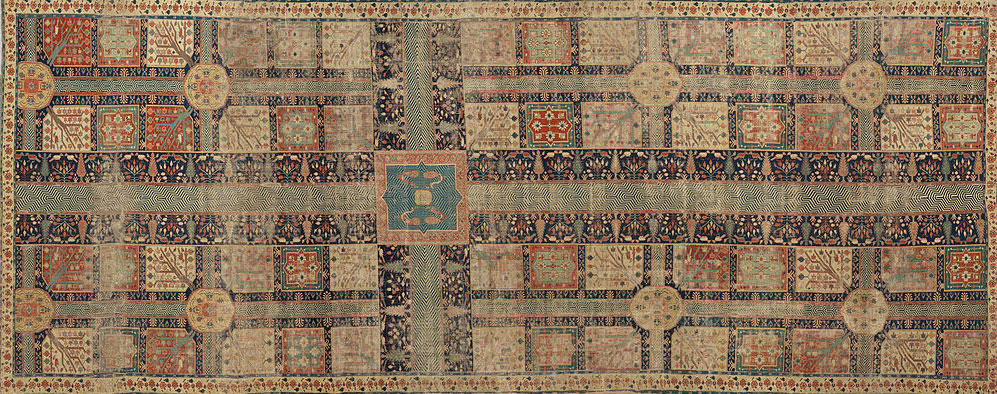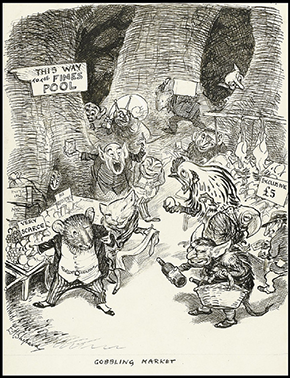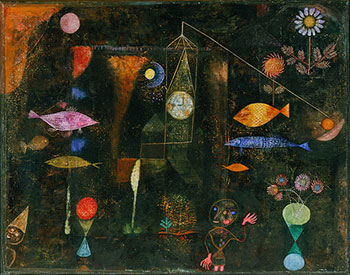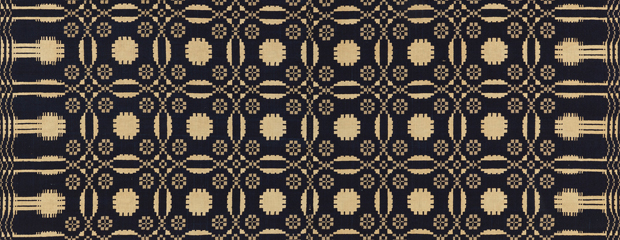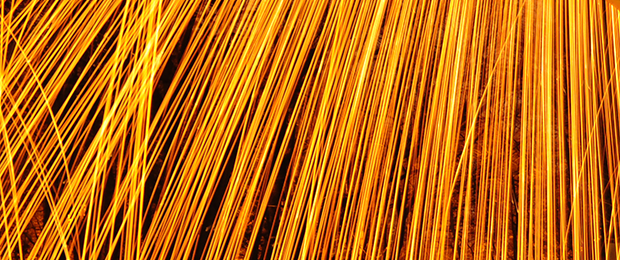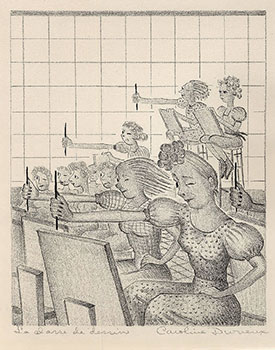- Women in Science Fiction Bundle — pay-what-you-want bundle of SF written by women. SF shapes invention, but it’s often a future filled with square-jawed men and chiseled Space Desperados, with women relegated to incidental roles. And lo, the sci-tech industry evolved brogrammers. This bundle is a good start toward a cure. Dare to imagine a future where women are people, too. (via Cory Doctorow)
- How I Hacked Amazon’s $5 WiFi Button to track Baby Data (Ed Benson) — Dash Buttons are small $5 plastic buttons with a battery and a WiFi connection inside. I’m going to show you how to hijack and use these buttons for just about anything you want. (via Flowing Data)
- The Realities of a $50 Smartphone (Engadget) — it can be done, but it literally won’t be pretty. If this thought experiment has revealed anything, it’s that there’s no such thing as a profit in the Android world any more.
- The Pocket Lab — a wireless sensor for smartphones that measures acceleration, force, angular velocity, magnetic field, pressure, altitude, and temperature.
"Internet of Things" entries

Designing at the intersection of disciplines
The O'Reilly Radar Podcast: Simon King on creating holistic, integrated experiences and the importance of discipline overlap.
Subscribe to the O’Reilly Radar Podcast to track the technologies and people that will shape our world in the years to come.
In this week’s Radar Podcast, I chat with Simon King, director of the Carnegie Mellon University Design Center. Harkening back to growing up on a family farm in Michigan, King talks about technology’s growing role in agriculture and the role design is playing in agriculture innovation. He also talks about his new book Understanding Industrial Design and the synergies between industrial design and interaction design. King will be speaking about industrial design at our newly launched O’Reilly Design Conference: Design the Future on January 19 to 22, 2016, in San Francisco.
Here are a few highlights from our conversation:
There’s been different eras of agriculture, and this latest one of precision agriculture or data-driven agriculture has the possibility of really changing the way people farm. I see that to some degree with people like my father and the new tools that he’s embracing slowly — things like autonomous driving tractors and some of the different data services. It’s an opportunity, I think, for new people to come into the field, and it’s going to be important.
Like most industries that are leading with technology, design trails. People are embracing the technology because it’s whole new capabilities that they never had before. Being able to do soil samples and analysis and then create nitrogen prescription maps so that you are not like wasting any chemicals — it’s such a great advancement that people are willing to fight through the fact that it’s poorly designed. We see that in medical; we see that in automotive. Any industry that reaches a certain curve where the technology has become mature, then all of a sudden the experience of using it begins to matter a lot more. I think that’s where design is going to start intersecting with agriculture really strongly and actually make it more accessible to farmers who are generally not that technically savvy.
Industrial design is such an older design discipline. Just purely from the design history standpoint, it’s something that everybody should be studying and be aware of how that discipline has evolved. It’s the underpinning of a lot of the different disciplines that design has kind of fragmented into.


Four short links: 17 August 2015
Fix the Future, Hack a Dash, Inside a $50 Smartphone, and Smartphone Sensors

Harmonizing the four factors that regulate our society
The O'Reilly Radar Podcast: Cory Doctorow on his work with the EFF, reforming the DMCA, and better IoT business models.
Subscribe to the O’Reilly Radar Podcast to track the technologies and people that will shape our world in the years to come.
In this week’s Radar Podcast, I sit down with science fiction author, activist, journalist, and blogger, Cory Doctorow. We talk about pitfalls in the Internet of Things and his work with the Electronic Frontier Foundation (EFF), including work to reform the Digital Millennium Copyright Act (DMCA) — the source of many of those IoT pitfalls. Doctorow also talks about why we should treat human beings as things that are good at sensing as opposed to things that need to be sensed.
Here are a few snippets from our conversation:
In the absence of any other confounding factors, obnoxious stuff that vendors do tends to self-correct, but there’s an important confounding factor, which is that in 1998, Congress passed the Digital Millennium Copyright Act. In order to try and contain unauthorized copying, they made it a felony to break a lock that protects access to a copyrighted work or to tell people information that they could use to break that lock.
I’m way more worried about the fact that the [DMCA] law also criminalizes disclosing information about vulnerabilities in these systems.
Lawrence Lessig, who was on our board for many years and is a great friend and fellow of Electronic Frontier Foundation, talks about how there are four factors that regulate our society. There’s code, what’s technologically possible. There is law, what’s allowed. There’s norms, what’s socially acceptable. And then there are markets, what’s profitable. In many cases, the right thing is profitable and also socially acceptable and legal and also technologically possible. Every now and again you run up against areas where one or more of those factors just aren’t in harmony.

Designing beyond screens to augment the full human sensorium
A new reality is coming that will forever change the way we engage with our surroundings.
Register now for Solid Amsterdam, our conference exploring the intersections of manufacturing, design, hardware, software, and business strategy. The event will take place in Amsterdam on October 28, 2015.
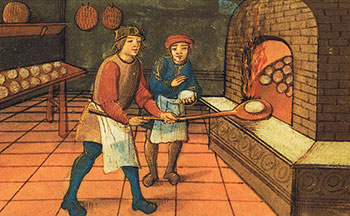 Virtual Reality (VR) strives to recreate the physical world in a virtual one. Augmented Reality (AR), on the other hand, can bring the digital into the physical world to create a hybrid reality. AR offers new ways of applying technology to immerse ourselves in our physical reality (rather than being removed from it), and even enhance it.
Virtual Reality (VR) strives to recreate the physical world in a virtual one. Augmented Reality (AR), on the other hand, can bring the digital into the physical world to create a hybrid reality. AR offers new ways of applying technology to immerse ourselves in our physical reality (rather than being removed from it), and even enhance it.
Interacting with screens is a big part of our everyday modern reality. We spend a great amount of time engaging with our world and each other through two-dimensional screens, whether via a smartphone, tablet, or computer. The world we live in, however, is three-dimensional and not flat: it is physical and involves the use of multiple senses. AR presents the opportunity to design beyond the screens we use today and create new experiences that better embody the full human sensorium.
In my last Radar article, I looked at how AR, wearable tech, and the Internet of Things (IoT) are augmenting the human experience. I highlighted how computer vision and new types of sensors are being combined to change the way we interact with and understand our surroundings. Here, I’ll look at how this can be extended by integrating the human senses beyond the visual — such as touch, taste, and smell — to further augment our reality. Read more…

A little AI in lots of things: Our most promising future with tech
The O'Reilly Radar Podcast: David Rose on enchanting objects, avoiding cognitive overload, and our future relationship with tech.
Subscribe to the O’Reilly Radar Podcast to track the technologies and people that will shape our world in the years to come.
In this episode of the Radar Podcast, I chat with David Rose, an entrepreneur, MIT Media Lab instructor, and author of Enchanted Objects. We talk about which objects we should enchant, and how to avoid being overwhelmed by object communication and cognitive overload.
Rose also weighs in on the AI debate and outlines the four potential ways he sees the Internet of Things shaking out.
Here are a few snippets from our conversation:
I’ve been a fan of magic and of studying the tropes that magicians have used to control the emotional arc of a trick, for example, and I think enchantment, for me, sort of sets a high bar for designers to consider not just the mechanism of what’s happening, but also consider how people are engaged — and are people delighted? What’s their emotional reaction to whatever the new connectivity or new sensor or new display is that’s in one of these objects?
Those phenomenon of using light and pattern and texture are all pre-attentive — meaning your brain process them in parallel; it’s non-distracting; it happens in less than 250 milliseconds. That’s the design space for the best types of interactions with objects because they don’t tend to overwhelm you, and you don’t perceive them as being a cognitive load because they aren’t a cognitive load.

Coming up at Solid Amsterdam
A look at our unified program for unified creators.
Register now for Solid Amsterdam 2015, our conference exploring the intersections of manufacturing, design, hardware, software, and business strategy. The event will take place in Amsterdam on October 28, 2015.
Creating a great product means knowing something about many things: design, prototyping, electronics, software, manufacturing, marketing, and business strategy. That’s the blend that Solid brings together: over our one-day program at Solid Amsterdam on October 28, 2015, we’ll walk through a range of inspiration and insight that’s essential for anyone who creates physical products — consumer devices, industrial machines, and everything in between.
Start with design: it’s the first discipline that’s called on to master any new technology, and designers whose work has been confined to the digital realm are now expected to understand hardware and connected systems as well.
Design at Solid begins with our program co-chair, Marko Ahtisaari, who was head of product design at Nokia from 2009 to 2013, and is now CEO and co-founder of The Sync Project. We’ll also hear from Thomas Widdershoven, creative director at Design Academy Eindhoven and co-founder of thonik, a design studio whose work specializes in interaction and motion design. Read more…

Bluetooth LE has solved the 50% problem, cracking open the IoT
The O'Reilly Radar Podcast: Alasdair Allan on BLE, data from the Pluto flyby, and the future of "personal space programs."
Subscribe to the O’Reilly Radar Podcast to track the technologies and people that will shape our world in the years to come.
In this week’s O’Reilly Radar Podcast, O’Reilly’s Mac Slocum chats with Alasdair Allan, an astrophysicist and director at Babilim Light Industries. In their wide-ranging conversation, Allan talks about the data coming out of the New Horizons Pluto flyby, the future of “personal space programs,” and why Bluetooth LE (BLE) is cracking open the Internet of Things.
Here are a few highlights from their conversation:
The only thing Bluetooth LE shares with traditional Bluetooth is the name.
Bluetooth LE, now that Google Android also supports it, has solved the 50% problem. … Now that all of the smartphones in the world have Bluetooth LE, or at least the more modern ones, there is a very easy way to produce low-power devices — wearables, embedded sensors, all of that sort of stuff — that anyone can access with a smart phone.
The Internet of Things is neither about the Internet, nor really the things. I much prefer the academic term “ubiquitous computing,” but no one really seems to want to use that, which is somewhat unfortunate.
You don’t have to worry about power, and that can be a real lever to open up the wearables market in the same way the BLE was a lever to open the IoT market.
There are hardly any impact craters on the surface of Pluto, so that means that the surface itself is active. … Also, there’s these huge mountain ranges, three-and-a-half-thousand meters tall — and they’re pointy. There is no way the mountains on Pluto should be pointy.

How real-time analytics integrates with our connected world
The O'Reilly Podcast: Scott Jarr on how real-time analytics applications can unlock value and automate decision-making.
In this special-edition O’Reilly Podcast, O’Reilly’s Ben Lorica and VoltDB’s co-founder Scott Jarr discuss how VoltDB’s hybrid transaction, analytic system allows for real-time analytics and personalization of data across various industries.
Scaling transaction processing without losing the relational database
MIT’s Mike Stonebraker (VoltDB’s co-founder) wanted to scale traditional OLTP (online transaction processing) without losing performance. The project evolved and eventually commercialized as VoltDB around the time NoSQL systems introduced a paradigm shift to non-relational databases. Jarr describes how Stonebraker’s approach didn’t assume a relational database was a core issue:
To give you an old story, but it’s a good story, they took a traditional style OLTP database and they ran it in memory. What they found was that it was doing less than 10% of its effective workload in processing transactions. The rest was dealing with overhead in various forms. He said, ‘Without getting rid of any of the things that we know [are] involved in the database world — consistency, SQL, ACID transactions, relational structures, high-level query languages — let’s keep all that, but let’s see if we can make this thing go faster.’
When those [NoSQL] systems were coming out, and they were coming out very strong, it was around the same time we were coming out with VoltDB. People were asking questions, ‘Well you’re consistent and they’re not.’ Or, ‘You’re relational and they’re not.’ I think that really lost the true meaning of what the differences were … [let’s] not get mired in the details … let’s look at the workloads that people are trying to accomplish.

Avoid design pitfalls in the IoT: Keep the focus on people
The O'Reilly Radar Podcast: Robert Brunner on IoT pitfalls, Ammunition, and the movement toward automation.
Subscribe to the O’Reilly Radar Podcast to track the technologies and people that will shape our world in the years to come.
For this week’s Radar Podcast, I had the opportunity to sit down with Robert Brunner, founder of the Ammunition design studio. Brunner talked about how design can help mitigate IoT pitfalls, what drove him to found Ammunition, and why he’s fascinated with design’s role in the movement toward automation.
Here are a few of the highlights from our chat:
One of the biggest pitfalls I’m seeing in how companies are approaching the Internet of Things, especially in the consumer market, is, literally, not paying attention to people — how people understand products and how they interact with them and what they mean to them.
It was this broader experience and understanding of what [a product] is and what it does in people’s lives, and what it means to them — that’s experienced not just through the thing, but how they learn about it, how they buy it, what happens when they open up the box, what happens when they use the product, what happens when the product breaks; all these things add up to how you feel about it and, ultimately, how you relate to a company. That was the foundation of [Ammunition].
Ultimately, I define design as the purposeful creation of things.

Signals from OSCON 2015
From Pluto flybys to open source in the enterprise to engineering the future, here are key highlights from OSCON 2015.
Experts and advocates from across the open source world assembled in Portland, Ore., this week for OSCON 2015. Below you’ll find a handful of keynotes and interviews from the event that we found particularly notable.
Cracking open the IoT
In an interview at OSCON, Alasdair Allan, director at Babilim Light Industries, talked about the data coming out of the New Horizons Pluto flyby, the future of “personal space programs,” and the significance of Bluetooth LE to the Internet of Things:
Now that all the smartphones have Bluetooth LE — or at least the modern ones, there is a very easy way to produce low-power devices (wearables, embedded sensors) that anyone can access with a smartphone. … It’s a real lever to drive the Internet of Things forward, and you’re seeing a lot of the progress in the Internet of Things, a lot of the innovation, is happening — especially in Kickstarter — around BLE devices.
